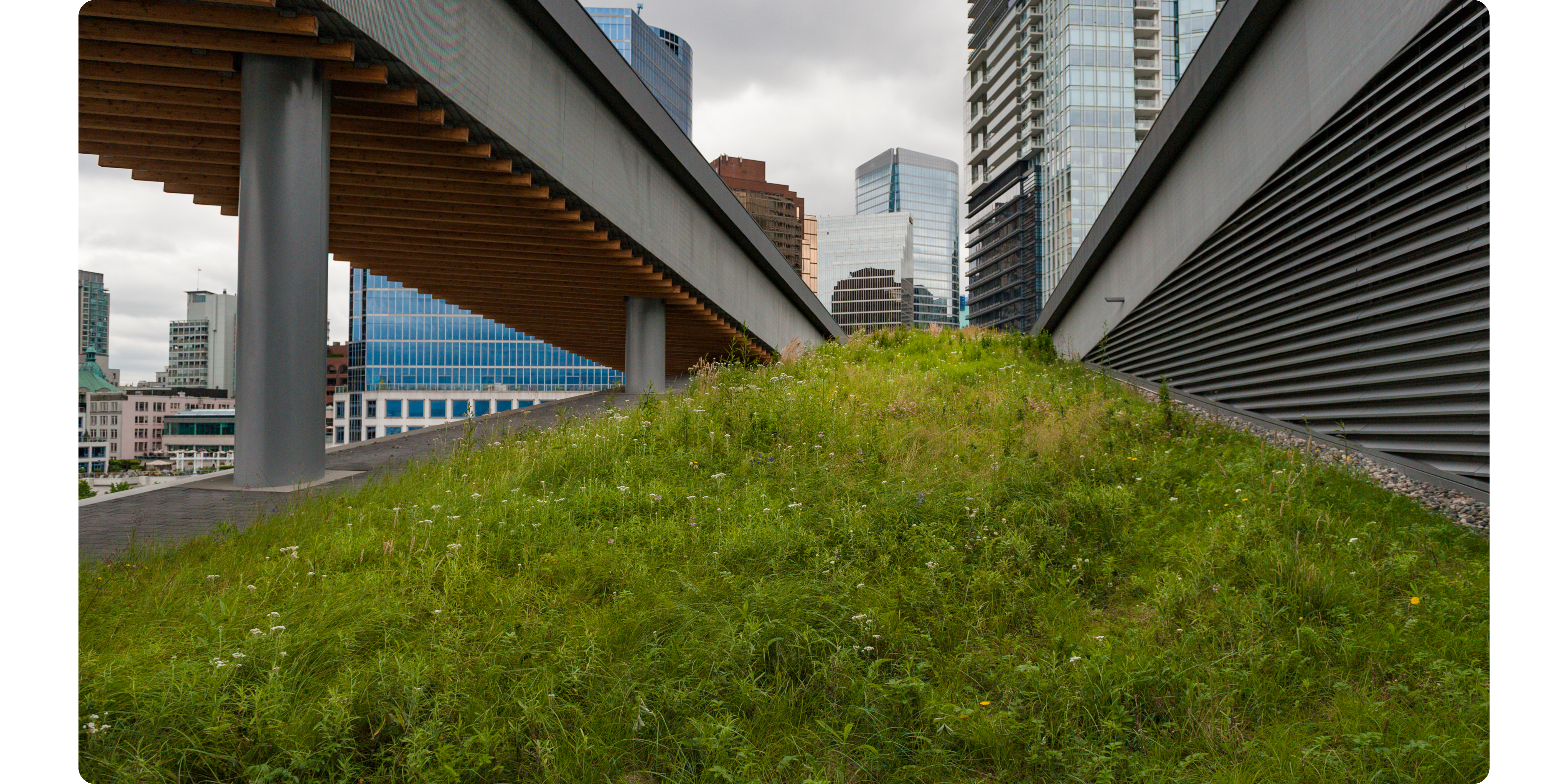In the bustling concrete jungles of today’s cities, green roofs are emerging as a beacon of hope, offering a multitude of benefits for both the environment and the people who inhabit these urban landscapes. But what exactly are green roofs?
Simply put, they are vegetative layers installed on the roofs of buildings, transforming otherwise barren rooftops into thriving ecosystems. These green spaces can host a variety of vegetation, ranging from grasses and flowers to shrubs and even small trees and can create a beautiful oasis in the city. But they offer much more than just aesthetic upgrades to a building.
Five Functional Benefits of Green Roofs
1. Stormwater Retention
In urban areas, where impermeable surfaces dominate the landscape, heavy rainfall can lead to significant runoff, overwhelming drainage systems and causing flooding. Green roofs act as natural sponges, absorbing rainwater and preventing it from flowing directly into storm drains. The vegetation and soil on green roofs retain a portion of the rainfall, gradually releasing it back into the atmosphere. This helps to alleviate pressure on stormwater management systems and reduces the risk of urban flooding.

2. Extended Roof Lifespan and Reduced Maintenance Costs
Another significant functional benefit of green roofs is their ability to extend the lifespan of the underlying roof structure and reduce long-term maintenance costs. The vegetation and soil layers act as a protective barrier, shielding the roof membrane from harsh weather elements such as UV rays, temperature fluctuations, and mechanical damage. By minimizing exposure to these factors, green roofs help to prevent premature deterioration and degradation of the roofing materials, ultimately prolonging the lifespan of the roof.
3. Enhanced Building Insulation and Cooling Effects
Green roofs act as a natural insulating layer, protecting buildings from temperature extremes. The vegetation and soil on green roofs provide additional thermal mass, helping to regulate indoor temperatures by reducing heat gain in the summer and heat loss in the winter. This leads to significant energy savings by reducing the requirements of the heating and cooling systems. Moreover, the evapotranspiration process from the vegetation helps to cool the surrounding air, creating a microclimate that can lower ambient temperatures in urban areas, mitigating the urban heat island effect.

4. Increased Biodiversity
By acting as a barrier and insulator, green roofs can extend the lifespan of a roof membrane, resulting in savings on maintenance and replacement costs. Additionally, these green installations can increase property values and rental income. The long-term financial benefits are a significant driver for both building owners and developers.
5. Calming Green Space for Building Occupants
Beyond their environmental benefits, green roofs offer psychological and social advantages for building occupants. These rooftop gardens provide a tranquil oasis amid the hustle and bustle of city life, offering a retreat where people can reconnect with nature. Whether it’s enjoying a leisurely stroll or simply soaking in the greenery, green roofs provide a rejuvenating space for building occupants.
Green roofs represent a sustainable solution to the environmental challenges faced by urban areas. From stormwater management to energy efficiency and biodiversity conservation, the benefits of green roofs extend far beyond their aesthetic appeal. As cities continue to grapple with issues of climate change and urbanization, integrating green roofs into urban planning and design offers a promising pathway towards creating healthier, more resilient communities.
